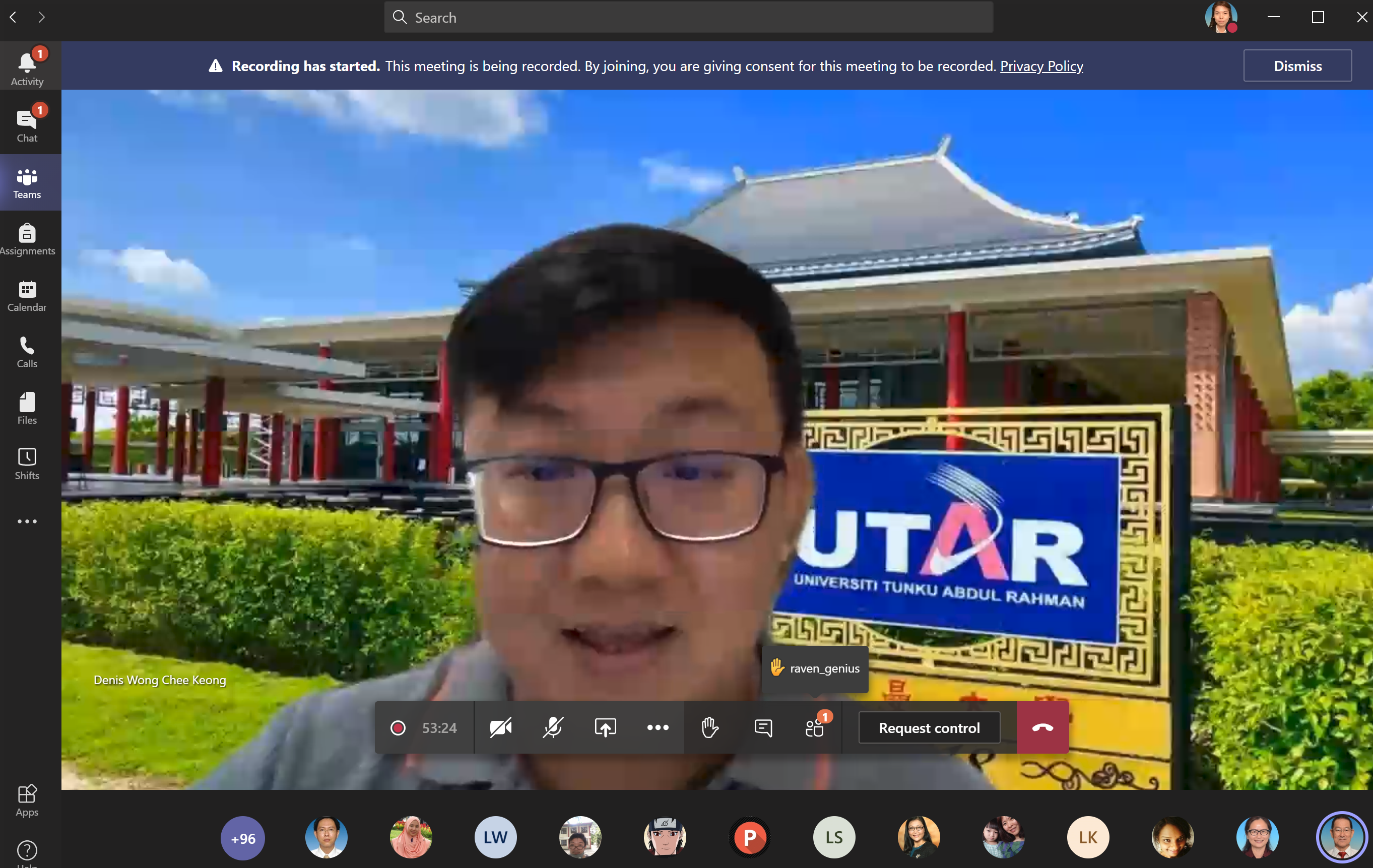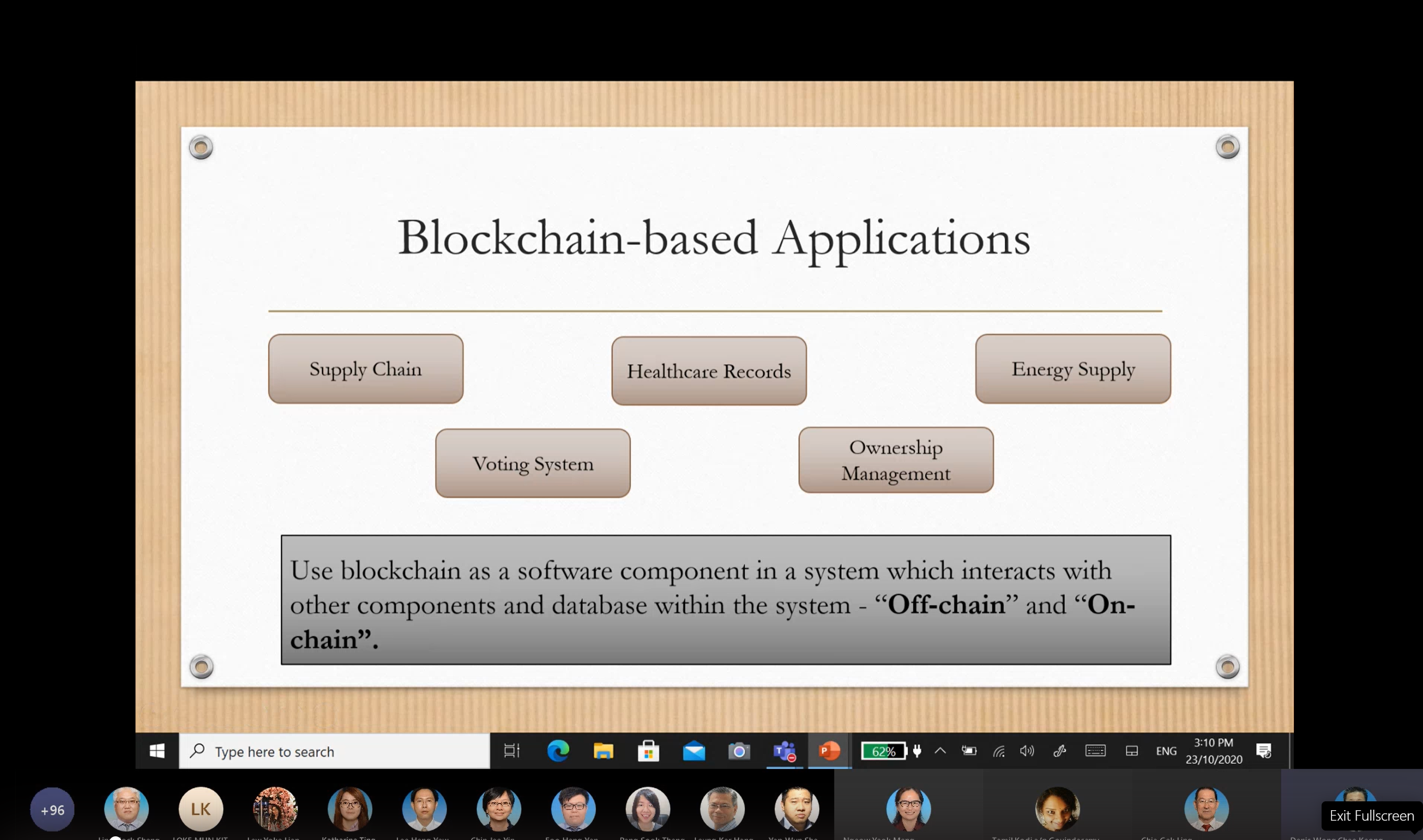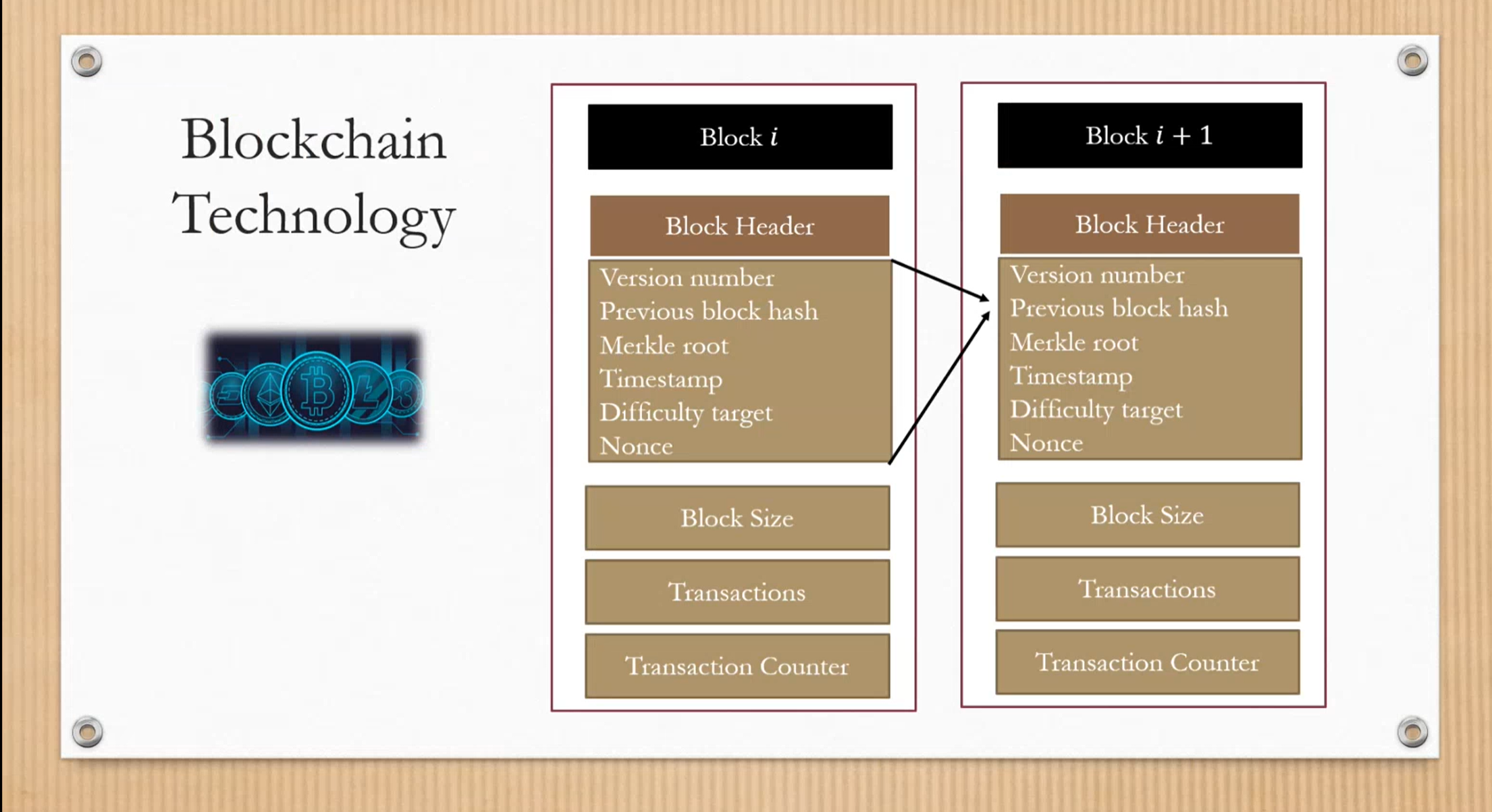
Blockchain, an emerging technology based on a distributed computing system and cryptography, is driving the 4th Industrial Revolution (IR) and Internet of Things (IoT) with increasing impact on cyber security, insurance, banking, data and financial analytics. The Centre for Curriculum Development and Innovation (CCDI) organised a webinar titled “Cryptography: Core Technology of Blockchain” on 23 October 2020. It was held via Zoom for academics and members of the public to understand the blockchain and its function.
The webinar, which saw more than 100 participants, was presented by UTAR Lee Kong Chian Faculty of Engineering and Science (LKC FES) Head of Programme for Master of Mathematics Dr Denis Wong Chee Keong who presented the use of blockchain technology for insurance underwriting process as a case study, cryptographic primitives and the curriculum design. The webinar was moderated by LCK FES Prof Dr Chia Gek Ling.

Dr Denis Wong
during the Q&A session
Furthermore, Dr Denis Wong shared
his experience in drawing linkage of mathematics to blockchain technology
into selected Year 2 and Year 3 Department of Mathematical and Actuarial
Sciences (DMAS) courses. The exposure of students to these theory-based
courses have led to Final Year Project research in relation to IR4.0, IoT,
cyber security, insurance, banking, data and financial analytics. Dr Denis
Wong also spoke about the history of blockchain, advantage and disadvantage,
zero-knowledge identification protocol and other related topics.


He later spoke about Combinatorial
Design and Finite Group Theory which is currently offered in the Applied
Mathematics with Computing programme that studies different types of block
design. “A block design is a set of the family of subsets which are chosen
to satisfy some properties. One of the block designs which receives a lot of
attention is the Balanced Incomplete Block Designs (BIBD) which is used in
the statistical issues in the experimental designs. The objective to combine
few disciplines and ideas from algebra and combinatory to investigate
multiple open problems in Post Quantum Cryptography,” said Dr Denis Wong.
The session was followed by a Q&A
session between the speaker and participants.
Dr Denis Wong Chee Keong received
his B.Sc. and M.Sc. degrees in Mathematics and PhD degree in Algebraic
Coding Theory from Universiti Sains Malaysia (USM). His research interests
include algebraic coding theory, algebraic combinatorics and cryptography.
![]()
Wholly owned by UTAR Education Foundation Co. No. 578227-M LEGAL STATEMENT TERM OF USAGE PRIVACY NOTICE